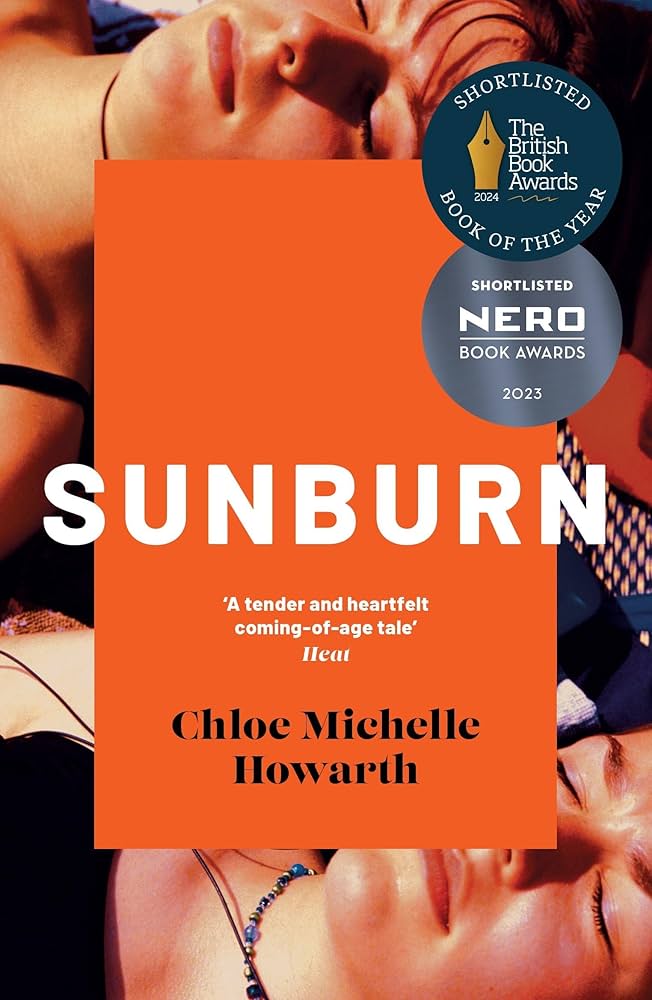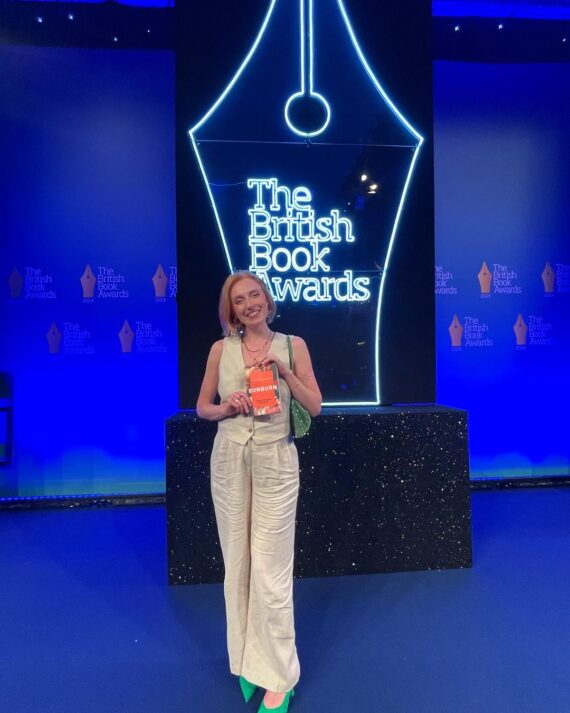Chloe Michelle Howarth, the author of the sun-soaked debut Sunburn, returns with a chilling new novel, Heap Earth Upon It, transporting readers to a small Irish village in 1965. Where her first book was drenched in summer light and the intensity of adolescent relationships, her latest work is colder, darker, and steeped in gothic suspense. In this intimate interview, Howarth shares her inspirations, writing process, and the evolution of her exploration of desire and obsession.
Returning Home: Writing Rural Ireland from Afar
For Howarth, returning to a rural Irish setting was instinctive. “It’s very natural for me to write about that setting as it’s where I’m from,” she explains. Writing Heap Earth Upon It from England allowed her to reconnect with home while also giving her the space to romanticise it, even as the story itself leans into grim and unsettling territory. “That romanticising was really important,” Howarth says. “It stops the story from becoming too bleak and gives it a kind of beauty, even when the events themselves are dark.” This
approach helps balance the novel’s gothic elements with the vivid familiarity of village life, making the claustrophobic social dynamics feel authentic and immersive.
Capturing the Claustrophobia of Small Villages
Howarth has a natural affinity for exploring the intense social pressures of small communities, and this novel is no exception. “I really enjoy creating tension,” she says. “The claustrophobia of village life is unnerving, and it makes readers feel uneasy. That was something I wanted to lean into.” Though Sunburn touched on village dynamics in a lighter, summery context, Heap Earth Upon It pushes this claustrophobia further. “I didn’t want to write the same village twice,” Howarth admits. Yet, she acknowledges that some elements inevitably overlap, small towns have inherent tensions and capturing them authentically means embracing both the charm and the discomfort of tight-knit communities.
From Sunburn to Heap Earth Upon It: A Deliberate Shift in Tone
Where Sunburn thrived on warmth, friendship, and adolescent longing, Howarth consciously aimed for contrast in her new novel. “I wanted something colder, less sweet,” she explains. “Sunburn is like a summer’s day; this is a winter’s day.” This tonal shift allowed her to explore darker, more complex emotions. “I wanted to see what happens when longing becomes unfiltered, when desire spirals out of control,” she says. “The protagonist isn’t from a society where queerness is acknowledged, so she doesn’t have a framework for her feelings. That lack of boundaries makes the story intense and sometimes dangerous.”
“To show what happens when a woman experiences very raw, unfiltered emotions without the social framework to understand them.” “I’m not interested in cutesy portrayals,” she explains. “I write the way I write, and queer themes happen to be part of that. I want the relationships to feel real, complicated, and at times, uncomfortable, because that’s life.” “It’s the opposite of safe or sweet, and that’s exactly what I wanted.”


Gothic Without Ghosts
Howarth’s gothic is psychological, rooted in human behaviour rather than haunted houses or vampires. She cites John B. Keane’s The Field as a key influence, admiring how small communities can conceal “very big problems” beneath a tranquil surface. “I’m fascinated by how ordinary communities can hide extraordinary conflicts.” Here, suspense and darkness emerge not from the supernatural but from desire, secrecy, and human fallibility. The gothic is found in what people do to each other and to themselves when social pressure and forbidden longing collide.
Desire, Obsession, and Female Relationships
Both Sunburn and Heap Earth Upon It examine the blurred boundaries between friendship, intimacy, and obsession, but Howarth’s latest takes these themes further. The protagonist’s emotions are unrestrained, her desire raw and unfiltered, and the narrative refuses to simplify or sentimentalise queer relationships.
“I’m not drawn to cutesy portrayals of queer desire,” Howarth says. “I want the relationships to feel real, complicated, and raw, because that’s how it actually is.” Here, longing is not adolescent whimsy; it is powerful, consuming, and sometimes perilous. The novel navigates these emotions with honesty, portraying desire as both beautiful and destabilising.
What’s Next for Howarth
Howarth is currently developing two very different projects, but Irish landscapes and queer narratives remain central to her work. Brighton may make an appearance in her writing, but only from an Irish perspective: “If I move away, I will write something about it. If I stay, probably not.” Ultimately, Howarth’s work continues to thrive on atmosphere, tension, and the intricacies of desire. Heap Earth Upon It is a novel that lingers in the mind long after the last page, a story that is as unsettling as it is engrossing.
Final Word
In Heap Earth Upon It, Howarth trades sunlight for shadow, exploring the darker sides of intimacy, identity, and community. It’s a novel that breathes tension, haunting, atmospheric, and brimming with human truth. If Sunburn was a heatwave of youth and longing, Heap Earth Upon It is the frost that follows, still beautiful, but sharp enough to leave a mark.
Another article you may enjoy: https://thebadgeronline.com/2025/10/norwegian-wood-book-review/

